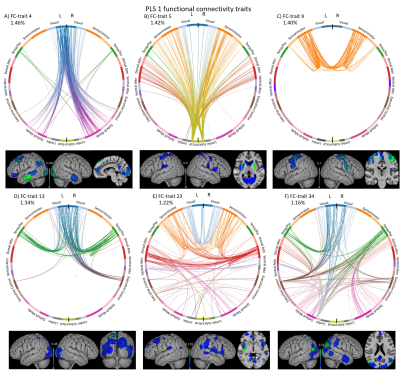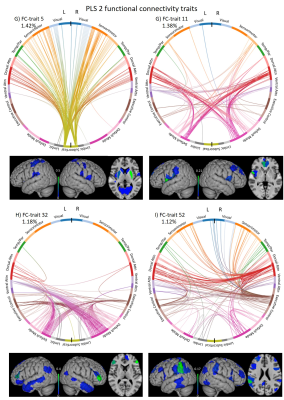Vicente Jose Ferrer-Gallardo1, Thomas Bolton2, Manuel Delgado3, Pedro M. Paz-Alonso1, Maricuz Rodriguez-Oroz4, and César Caballero-Gaudes1
1Basque Center on Cognition, Brain and Language, Donostia, Spain, 2Medical image processing, Swiss Federal Institute of Technology Lausanne, Lausanne, Switzerland, 3Department of Neurology, Sierrallana Hospital, Torrelavega, Spain, 4Neurology Department, Clinica Universidad de Navarra, Pamplona, Spain
1Basque Center on Cognition, Brain and Language, Donostia, Spain, 2Medical image processing, Swiss Federal Institute of Technology Lausanne, Lausanne, Switzerland, 3Department of Neurology, Sierrallana Hospital, Torrelavega, Spain, 4Neurology Department, Clinica Universidad de Navarra, Pamplona, Spain
Our data underscore two types of whole-brain functional connectomes that are differentially related to cognitive abilities and anthropometric measures in Parkinson Disease patients with mild cognitive impairment using a partial least squares regression approach.

Figure 4. Significant FC-traits of PLS component 1 (shown in blue in Figure 3) Each FC-trait is represented by its FC circular plot thresholded to 1% of the strongest connections grouped by functional networks organization, and the map of FC node degree (i.e. sum of functional connections from and to each brain region). The variance explained by each FC-trait is also indicated.

Figure 5. Significant FC-traits of PLS component 2 (shown in yellow in Figure 3). Each FC-trait is represented by its FC circular plot thresholded to 1% of the strongest connections grouped by functional networks organization, and the map of FC node degree (i.e. sum of functional connections from and to each brain region). The variance explained by each FC-trait is also indicated.
